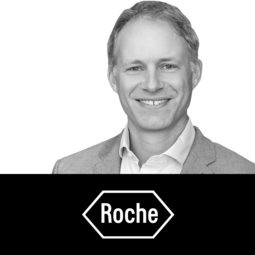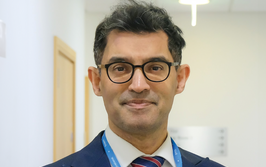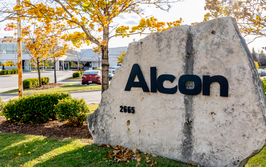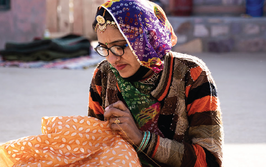Roche

Christopher Brittain
Vice President, Global Head of Ophthalmology Product Development Roche
What is the Roche team excited about right now?
In the last six months, we achieved FDA approval of not one but two new therapies, Vabysmo and Susvimo. Both of these products have been in development for well over a decade. Vabysmo has a bispecific mechanism of action against VEGF and Ang-2, and its dosing regimen allows around half of the patients to receive treatment as infrequently as every four months. Susvimo is the first refillable eye implant to continuously release ranibizumab, enabling patients to go six months between treatments. Finally seeing these therapies – both of which can significantly reduce the burden of treatment – offered to patients means so much to us all.
What role does R&D play in the success of Roche?
R&D is the lifeblood of Roche/ Genentech. Well over 1,000 people worked on Vabysmo and Susvimo over the years, and similar numbers of our colleagues are currently working on new developments across the company. Successful innovation enables us to reinvest in R&D: Roche invested 13.7 billion CHF ($14.7 billion) in R&D in 2021 alone. For those of us in ophthalmology that means we are currently running four Phase III trials for Susvimo and Vabysmo in DME, DR, CRVO, and BRVO, three Phase II trials in GA and DR, and – even more excitingly – several Phase I studies that we hope will enable the Port Delivery System eye implant to be used with a new range of therapeutics.
What are the biggest challenges of running a successful R&D program?
Our people are the most important part of all of our programs. Ensuring we find the best scientists and medics is one of our biggest priorities. I am incredibly proud to say that we have built out an impressive organization that allows individuals to contribute to all stages of drug development. We all continue to learn from an incredible breadth of fellow scientists specializing in areas from manufacturing and quality to preclinical testing – and through to Phase III studies and beyond. Another challenge is accepting failure and learning from it. When our Phase III lampalizumab study in GA failed to demonstrate a treatment effect, we didn’t give up. Instead, we have published numerous papers with many collaborators, sharing what we have learned. Today, we have used those lessons to enable our four ongoing clinical programs in GA.
Who are the unsung heroes within your R&D team?
There are countless unsung heroes, but the one group I would mention are those who work on the manufacturing and distribution of our products. As we develop therapeutics, scale up production, distribute products for trials and then commercially, the complexities of understanding and controlling the biological processes at play for the manufacture of the antibodies, gene therapies, and cell therapies we investigate cannot be underestimated. The teams involved are large, global, diverse, and incredibly important.
https://futureofvision.global/













